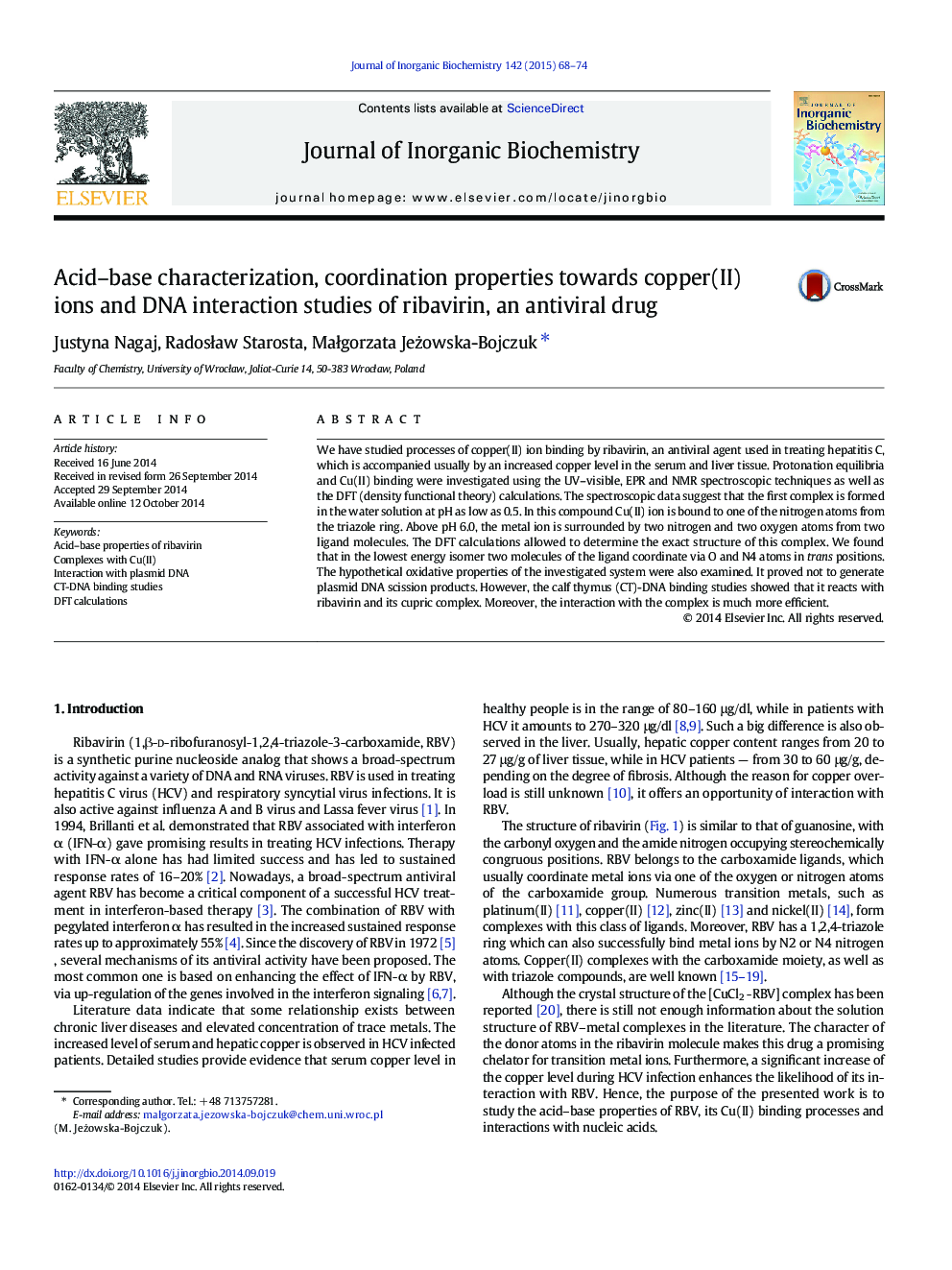| Article ID | Journal | Published Year | Pages | File Type |
|---|---|---|---|---|
| 1317221 | Journal of Inorganic Biochemistry | 2015 | 7 Pages |
•Processes of ribavirin coordination to Cu(II) ions were described in broad pH range.•RBV molecules coordinate to Cu(II) ion most probably by N4 and O atoms in trans position.•Structure of Cu(RBV)2 complex in solution agrees with the X-ray ones.•More effective interaction of copper complex than the free drug with CT-DNA was indicated.
We have studied processes of copper(II) ion binding by ribavirin, an antiviral agent used in treating hepatitis C, which is accompanied usually by an increased copper level in the serum and liver tissue. Protonation equilibria and Cu(II) binding were investigated using the UV–visible, EPR and NMR spectroscopic techniques as well as the DFT (density functional theory) calculations. The spectroscopic data suggest that the first complex is formed in the water solution at pH as low as 0.5. In this compound Cu(II) ion is bound to one of the nitrogen atoms from the triazole ring. Above pH 6.0, the metal ion is surrounded by two nitrogen and two oxygen atoms from two ligand molecules. The DFT calculations allowed to determine the exact structure of this complex. We found that in the lowest energy isomer two molecules of the ligand coordinate via O and N4 atoms in trans positions. The hypothetical oxidative properties of the investigated system were also examined. It proved not to generate plasmid DNA scission products. However, the calf thymus (CT)-DNA binding studies showed that it reacts with ribavirin and its cupric complex. Moreover, the interaction with the complex is much more efficient.
Graphical abstractProtonation equilibria and Cu(II) binding processes by an antiviral agent ribavirin were studied using UV–vis, EPR and NMR spectroscopic techniques and DFT calculations. The interaction of ligand and complex with plasmid and CT-DNA were also investigated.Figure optionsDownload full-size imageDownload as PowerPoint slide
